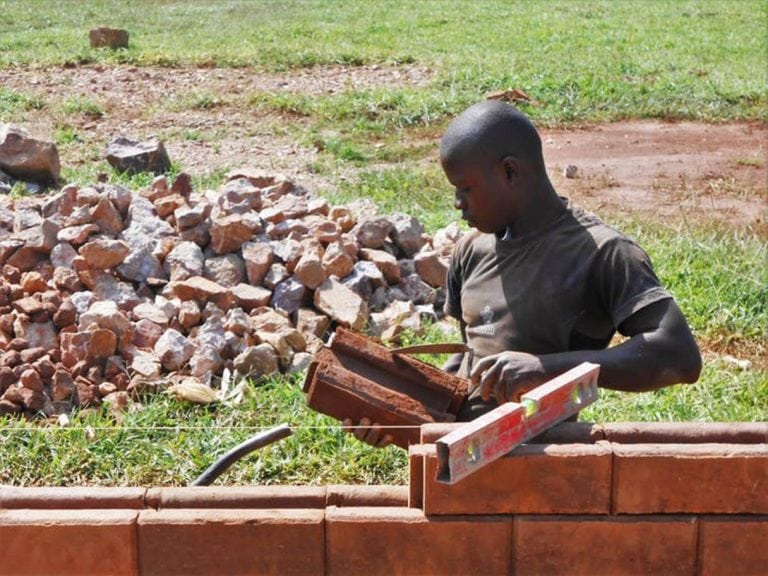Carbon registries are funding sustainable development projects in Africa, and they are pivotal to the global push for credible and transparent emissions reductions. They are also expected to grow. There are 10,700 carbon projects listed in the latest update to the Berkeley Carbon Trading Project, a database of all the carbon offset projects and credit issuances listed globally by five major voluntary offset project registries representing nearly all of the world’s voluntary market offsets. The value of the voluntary carbon credit market is estimated at (USD) 2.1 billion in 2025 and projected to grow to nearly $20 billion by 2035.
These registries help move corporate and governmental strategies beyond pledges and into measurable action, making them central to the transition to low-carbon economies. As carbon markets grow, tools like carbon credit ratings help ensure funding supports high-impact projects that drive both emissions reductions and sustainable development.
Read More: Can Carbon Credits Pay for Global Water Security?
For example, the Ghana Carbon Registry, overseen by Ghana’s government, is a “vital tool for verifying emissions reductions and linking climate projects with buyers in the compliance carbon market,” says Elikplim Asilevi, General Manager of Safisana, a Ghana-based global circular economy waste management enterprise.
Carbon registries build credibility
In Kenya, the National Environment Management Authority (NEMA) hosts the National Carbon Registry. Under current regulations, the Director General of NEMA acts as the National Carbon Registrar. The registry is still under development and expected to launch by year-end. The recently introduced REDD+ Registry, a sector-specific platform, will be integrated into the main registry once operational.
This registry, designed to enhance the credibility and transparency of carbon crediting systems and projects within Kenya, aligns local carbon projects with national climate goals. The registry’s impact on Kenya is that it will standardize the carbon project registration process. This standardization helps to verify project legitimacy for international buyers and tracks various aspects of carbon projects, including community involvement and benefit-sharing.
Mr. Michael Koech, Climate Change and Environment Officer at NEMA’s DNA Office, explained that projects on community land must demonstrate stakeholder engagement and obtain community consent before approval. Once issued, carbon credits are assigned a unique ID in the National Carbon Registry to prevent duplication or double-selling, making the registry a key tracking tool for credit integrity. This ensures there is a proper flow of climate finance to local communities.
Additionally, the registry aims to standardize the carbon project registration process and is designed to track the lifecycle of carbon credits, from project registration to issuance, transfer, and retirement. It verifies project legitimacy, which is crucial for international buyers.
Carbon registries promote equitable benefits
Nyahoro Maina, founder of Biomaps Kenya, emphasized that the registry promotes equitable benefit-sharing, particularly for Indigenous Peoples and forest-dependent communities.
“It incorporates mechanisms to track community involvement and address historical concerns such as displacement and restricted grazing. By directing climate finance to the most affected populations, the registry supports alternative livelihoods in vulnerable regions,” Mr. Maina says.
Under the Climate Change (Carbon Markets) Regulations 2024, NEMA ensures that ‘free, prior and informed consent,’ as the industry terms it, is properly done and the community enter a formal agreement that protects against exploitation. During registration, NEMA ensures that the proponents provide information on land ownership, attaching the CDA, which also ensures that the community gets its fair share of revenue as per the regulation.
National climate registries attract international financing
Moreover, the registry is crucial for attracting international climate finance by providing a credible and transparent system. It enables Kenyan projects to participate in voluntary carbon markets, a key avenue for securing funding. By offering verified credits, the system helps international buyers offset their emissions, indicating a demand that drives finance into the market.
Speaking at a webinar hosted by Engineering for Change, Dr. Diana Gragg of Stanford University emphasized the pivotal role of voluntary carbon markets in advancing renewable energy financing. She noted that the severity of climate change necessitates consideration of high-cost solutions such as direct air capture, despite its technical complexity, and carbon credits may be one way to cover the cost. Dr. Gragg further highlighted that coordinated efforts between governments and the private sector will enhance the effectiveness of carbon markets in mobilizing global investment in clean energy.
Video clips: The Shift to Clean Energy with Stanford’s Diana Gragg
Carbon markets stand as a driving force in the global quest to curb greenhouse gas emissions. By unlocking private investment, sparking innovation, and fueling projects that uplift both people and the planet, these markets transform climate ambition into tangible progress.
Built on trust
Yet, their true power rests on trust, ensuring every carbon credit reflects genuine, lasting change. In the coming years, bolstering oversight, shining a light on market operations, and weaving voluntary efforts into the fabric of international climate goals will be essential. When thoughtfully crafted and managed, carbon markets can help steer the world toward a low-carbon future, delivering lasting rewards for communities and nature alike.
About the Author
Mercy C. Wanjiku Nduati is the Engineering for Change Editorial Fellow for 2025. She also works on the editorial staff of the Vennomax Media Network that publishes the Industrial Journal magazine. And she has written for the magazine Kenya Engineer, published by the Institution of Engineers in Kenya. She holds a bachelor’s degree in communication and media from Egerton University.

